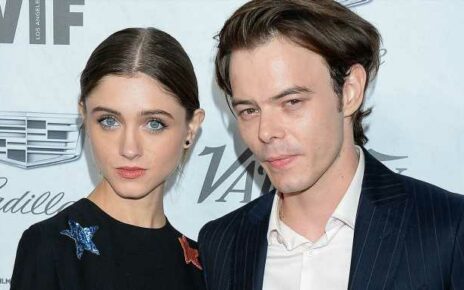For Canadian filmmaker Joële Walinga, the unique doc “Self Portrait,” built entirely from publicly available surveillance footage collected from around the globe, began as a bit of an obsession, she says.
Screened in the main competition at the Ji.hlava International Documentary Film Festival, the often-ironic film, which raises intriguing questions about how (and by whom) we are all being recorded and documented, was put together from video files gathered for years, says Walinga.
“I had stumbled on the information some time four or five years ago that there were thousands of unlocked surveillance cameras from all over the world that could be accessed on the Internet,” she recalls.
“Basically, if a camera is either meant to be accessible to the public, or if the owner forgot to set a password on it, I would be able to view it by searching the correct IP address. It was so thrilling to me – it was like being told that there are thousands of windows with views I’d never seen and couldn’t imagine that I could just peer through at any given moment.”
As she began amassing a collection of her favorite sights from the cameras, she says, “it occurred to me that we were, as humans living in capitalism, emitting information about ourselves that we haven’t spent much time thinking about: What do these cameras say about us?”
The global preponderance of lenses trained on us all, she says, can’t help but be invasive. “The very existence of these cameras – erasing more and more of our private spaces and moments in the name of property and surveillance – surely speaks volumes.”
At the same time, she adds, the purpose of some is far from clear.
“I am consistently baffled at what these cameras are positioned towards. What are they looking at?”
Some focus on beaches, some mountaintops, some vast, empty fields, some at blank walls – but the footage is lent an almost magical realism quality by the soundtrack Walinga created to accompany her 66-minute montage of shots.
“Since all of the footage is inherently silent,” she says, “sound was all designed and built up from scratch for the 166 shots that comprise the film.”
A child-like chorus of “Ave Maria” runs behind some footage, just one layer of the form her work eventually took.
“When I realized my collection of footage had reached 1,500 clips, from five seconds up to two hours in length, I realized my library functioned as a sort of incidental self-portrait and I was curious to see what it looked like when put together rhythmically through the lens of what strikes me as beautiful and moving.”
Waling says she captured the shots by screen recording videos with QuickTime. “Great effort has been taken to avoid personal moments or the recognition of individuals,” she adds.
As for her criteria in selecting shots, she says, “I’m interested in infrastructure, the things we’ve built on this earth, the way we’ve shaped it to our preferences and needs, and the things we’ve decided to look at. I’m especially excited at the possibility that this capitalist technology could accidentally yield a beautiful frame, a perfect moment of light passing or a flare in the lens and manipulating it into art has been deeply satisfying to me.”
The decisions were intuitive, she says, and the film is structured to follow the seasons.
“First I made folders with hundreds of clips organized by each season, and then reduced from there. Many of my favorite shots didn’t make it in the film – I had to kill some darlings in the name of rhythm and tone.”
A major challenge was to edit a feature film with nearly all static frames “and with zero narrative linear motion,” Walinga says. “I tried to think about where the emotions were with each frame, and followed the rhythm of that emotional journey for me as I edited. The sound plays a huge part too – some shots were chosen because of their sound potential, which was key for maintaining this emotional rhythm.”
Her greatest discovery amid the mountain of footage, says the director, “was that it could be beautiful. I was consistently blown away by an amazing shot and perfect light, by ways in which I would have never thought to position the camera.”
Picture stories in her mind to go along with the shots helped Walinga find her structure, she says.
“I was surprised and delighted by the possibility of creating a fictional narrative within each shot with the sound design. With so many static shots with little movement and few people, I imagined what could be taking place nearby, just outside of these frames. And so the film contains many peripheral happenings, the moments I imagine occupying these expanded fictions beyond the frame.”
At the same time, her intuitive approach remained the key for Walinga, she says.
“This is not a logical film – it’s about submitting yourself to it and letting your whole body feel it.”
Read More About:
Source: Read Full Article

